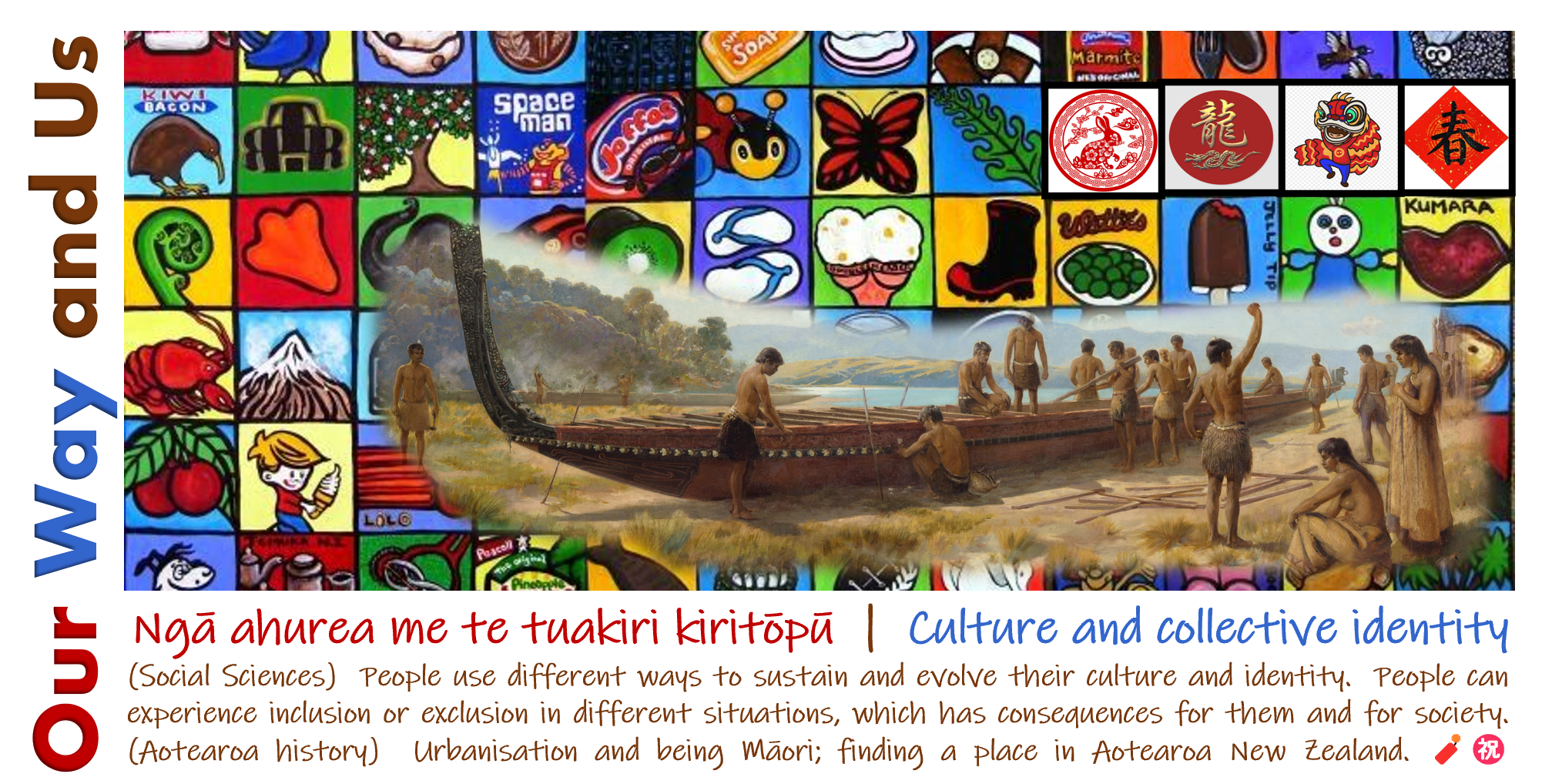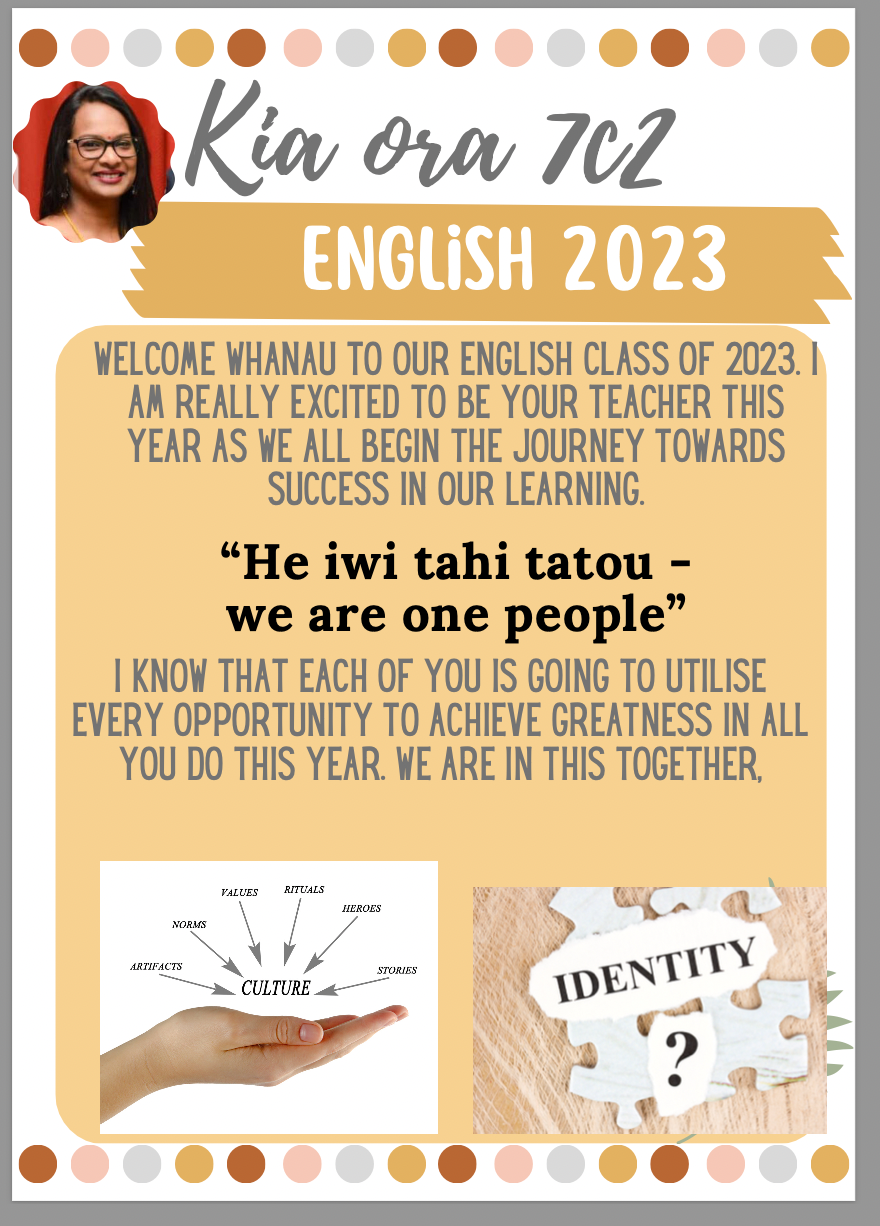7C2 English
Section outline
-
Kia ora Year 7's
I hope you all have had a restful and relaxing holiday.
We are going to have a great learning journey this term.
Success criteria:
We are going to review key information about how to write a Book review.
We will learn the different parts of a book review and analyse some example texts.
We will use the features of a book review to complete our work.
Learning activities:
Google classroom activity
Homework:
Reading plus activities
-
Nau Mai Haere Mai! Welcome Come in!
It is the start of Term 4 and we are going to have an awesome learning journey.
Learning Intentions:
- Students will be able to explain the PEEL paragraph structure.
- Students will be able to write a PEEL paragraph in response to a writing prompt.
Success Criteria:
- Students can identify the four components of a PEEL paragraph: Point, Evidence, Explanation, and Link.
- Students can write a clear and concise topic sentence that states their main point.
- Students can provide relevant evidence to support their topic sentence.
- Students can explain how their evidence supports their topic sentence.
- Students can use a link sentence to connect their paragraph to the rest of their writing.
Learning activities:
- How to write a PEEL paragraph
Prompt: Why is it important to be kind to others?
Point: Being kind to others is important because it makes the world a better place.
Evidence: When we are kind to others, it makes them feel good and it can brighten their day. It can also make us feel good and it can strengthen our relationships.
Explanation: When we are kind to others, we are showing them that we care about them and that we value their feelings. This can help to create a more positive and supportive environment for everyone.
Link: In conclusion, being kind to others is important because it makes the world a better place for everyone.
In class we will be using the prompts given to write our own paragraphs using the PEEL structure.
-
Whāia te mātauranga hei oranga mō koutou
This whakatauki refers to the importance of learning for it is key to your wellbeing. If you follow the path of learning, the world will be your oyster.During this week we will be completing our End of Year writing sample.
This is a piece of writing you may have completed in English or in any other learning area.
In the first session this week- you will get several writing prompts to choose from. Thereafter, you will choose whether this will be your pice of work for submission or you will work on a piece from another learning area.
In the second session this week- you will be editing and proofreading your writing piece for submission.
By the last session of the week our writing pieces will be polished and ready to be assessed.
I have attached the writing rubric below for you to use as a guideline on what I will be looking for in your work.
Working Towards
Working At
3A
Working Above
4P
Working Beyond
5B+
Ideas Development [Variety and Sophistication]
You are working towards expressing clear, ideas with awareness of purpose, which are organized most of the time, and you have included simple facts
You have expressed several ideas which are appropriate to the purpose of the task and most of these are explained with simple supporting facts/details
You have expressed several ideas which are explained, supported by evidence, and which are appropriate to the intended purpose and audience
You have discussed relevant and detailed ideas which are supported by effective evidence and you have reflected on links to the wider world and/or other perspectives
Structure and Organisation [Syntax and Grammar]
You are working towards structuring some simple sentences correctly and have started to include a variety of other sentence types and you may have attempted to arrange these into paragraphs
You have used a variety of accurate sentences which may have errors (such as fragment or run-on sentences) and you are continuing to arrange these into paragraphs (these may not be accurate)
You have used a range of sentence structures for effect, which may have a few errors (such as fragment or run-on sentences), and these are arranged into paragraphs which are mostly accurate
You have crafted a range of accurate sentences for effect, into coherent paragraphs which link to and support other paragraphs
Language Use [Vocabulary and Language Devices]
You are working towards using factual and/or descriptive language (as appropriate) which is suitable for your audience
You have used language and tone/style that shows a growing understanding of the needs of your audience and may include some language techniques
You have used interesting language (including some language techniques) and a writing style which is appropriate to your audience
You have started to control your use of interesting language/ language techniques relevant to your topic, as well as a writing style appropriate to your audience
Spelling
You are working towards spelling most frequently-used words correctly.
You are spelling frequently-used words correctly and attempting more complex words using spelling patterns and strategies with some success
You have used knowledge of spelling strategies to correctly spell a range of complex and multi-syllabic words, and these are accurate most of the time
You have used knowledge of spelling strategies to correctly spell a range of complex and multi-syllabic words, and these mostly have a high level of accuracy with little inference needed by the reader
Punctuation
You are working towards writing in sentences that start with a capital letter and end with a full stop and may include other punctuation, this may not always be correct
You have used full stops and capital letters accurately, with some errors in complex punctuation (e.g. commas, colons, apostrophe, etc.)
You have used basic and complex punctuation accurately most of the time (e.g. commas, colons, apostrophe, etc.)
You have used a range of basic and complex punctuation accurately (e.g. commas, colons, apostrophe, etc.) and your punctuation may support meaning
-
Kia ora Year 7's
We will only see each other for one session this week and this will be on Tuesday.
We are going to the library for this session- please ensure that if you have any books that are overdue you bring it to school on Tuesday.
We will be exploring some sophisticated picture books this during this lesson.
Nga mihi
Mrs M Naidoo -
EXPLORE / TŪHURA learning intentions:
- We are EXPLORING a film study to communicate ideas and information for a range of purposes and audiences.
- We are EXPLORING how to use language features to create specific effects in our writing.
I am an active learner as I know what I need to learn, where I am with that learning and what my next learning steps are:
- Emerging:
- I know what I am learning and why
- I can use evidence to identify where I am with my learning
- I can use evidence to identify my next learning steps
- Growing:
- I can describe what I am learning and why, using our shared language for learning; GREAT Ako
- I can use evidence to describe where I am with my learning
- I can use evidence to plan and take my next learning steps
MHJC GREAT Learner Learning to Learn / Ako: Digital Literacy
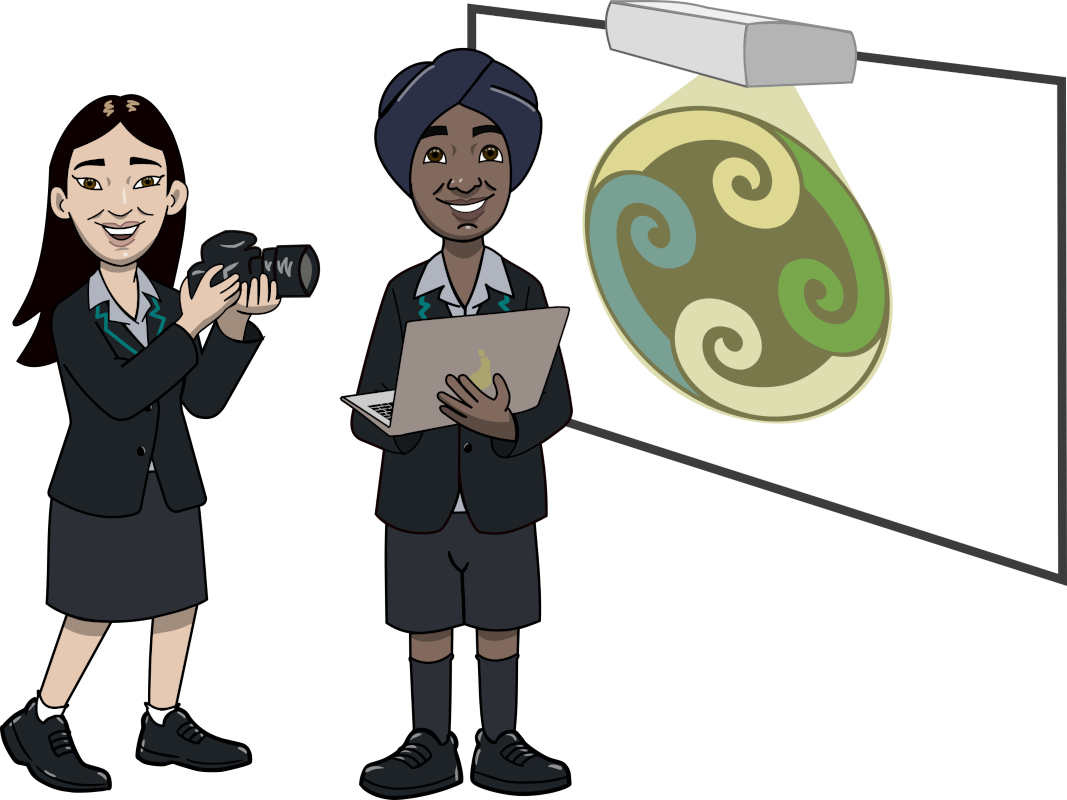
Learning Intentions:
- Students will be able to analyze and interpret a film.
- Students will be able to write a critical response to a film.
- Students will be able to communicate their ideas about film in a clear and concise manner.
Success Criteria:
- Students can identify the key elements of a film, such as plot, character, setting, theme, and cinematography.
- Students can explain how the different elements of a film work together to create a unified whole.
- Students can analyze and interpret the film's meaning and significance.
- Students can write a critical response to the film that is well-organized and well-argued.
- Students can communicate their ideas about film in a clear and concise manner, using appropriate language and grammar.
MOKOPUNA
Writer/director Ainsley Gardiner weaves this story about Mary and Sam. Mary lives in middle-class suburban New Zealand. After befriending a Māori boy at her school, Mary becomes curious about Sam’s culture and its relevance to her. Mary has a Māori father and Pākehā mother, while Sam lives with his Māori nan. Mary is intrigued by Sam and his culture, and by beginning to enquire about him, she begins to ask questions about herself. But when Sam turns his curiosity onto her, it soon becomes clear that Mary is not quite ready to embrace her own roots.
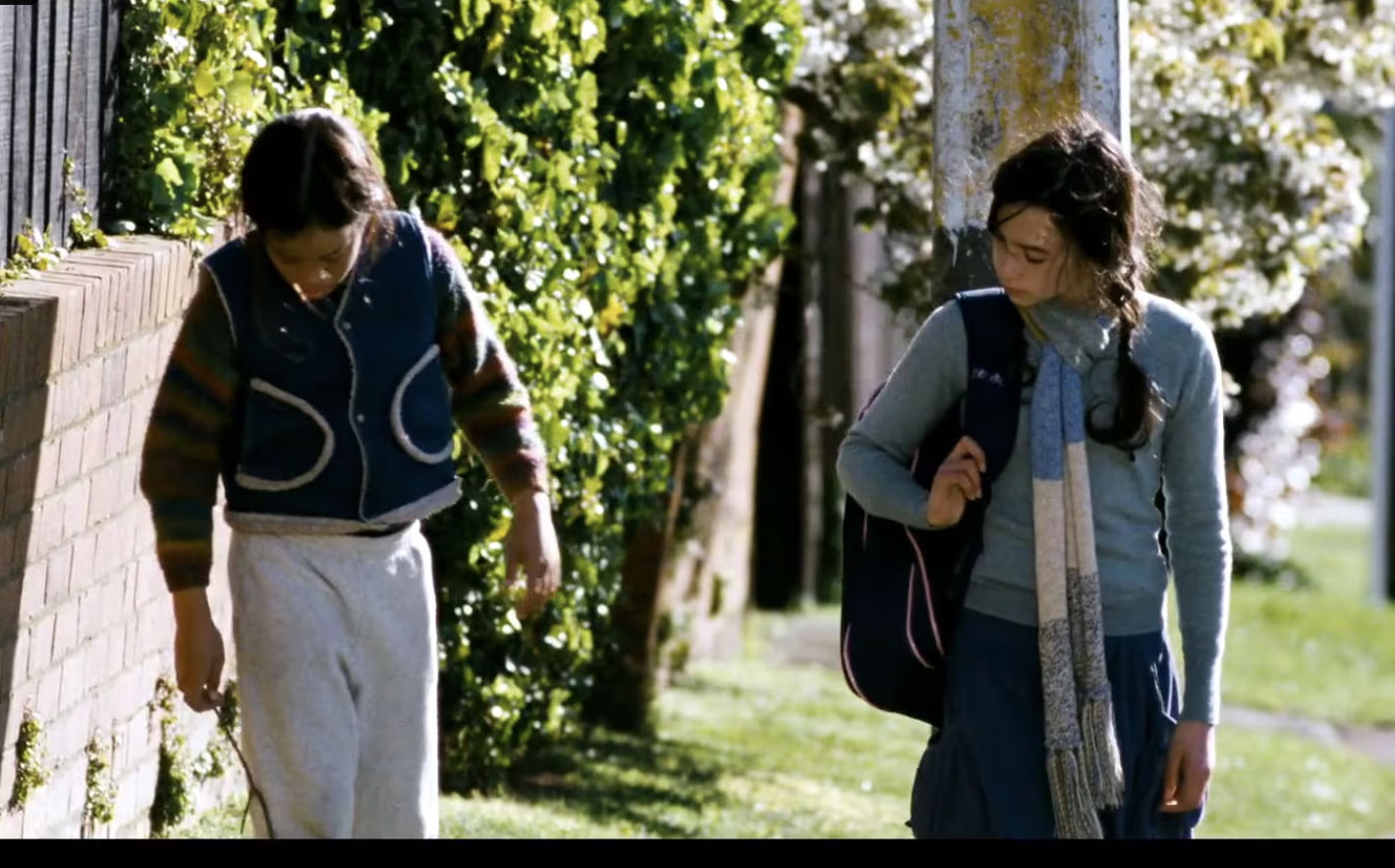
Learning activities:
Exploring Character Question:
- What defining features make people the same or different?
- Although these two children are at the same school, they don’t seem to know each
other very well. Why do you think that might be?
- What is it about this boy that makes Mary so curious?
- Do you think those characters are mostly the same or mostly different? Make a double
bubble map to compare the two characters.
- Are the two main characters treated the same at school? Why do you think this would be?
- Do you think their culture plays a part in this? Is it important we learn about our cultural heritage? Why do you think this?
- Where do we learn about our cultural heritage – at school, at home, at other places?
- Who do you think had a better understanding of their culture and the culture of others in this story? Did any character seem to show this?
- What do we know about our own culture?
-
EXPLORE / TŪHURA learning intentions:
- We are EXPLORING a film study to communicate ideas and information for a range of purposes and audiences.
- We are EXPLORING how to use language features to create specific effects in our writing.
I am an active learner as I know what I need to learn, where I am with that learning and what my next learning steps are:
- Emerging:
- I know what I am learning and why
- I can use evidence to identify where I am with my learning
- I can use evidence to identify my next learning steps
- Growing:
- I can describe what I am learning and why, using our shared language for learning; GREAT Ako
- I can use evidence to describe where I am with my learning
- I can use evidence to plan and take my next learning steps
MHJC GREAT Learner Learning to Learn / Ako: Digital Literacy

One Shoe Short by Jackie van BeekLearning Intentions:
- Students will be able to identify and describe different camera techniques used in the short film "One Shoe Short."
- Students will be able to explain how camera techniques are used to create different effects and emotions in the viewer.
- Students will be able to use camera techniques in their own filmmaking.
Success Criteria:
- Students will be able to identify and name at least three different camera techniques used in the film.
- Students will be able to explain how each camera technique is used to create a specific effect or emotion in the viewer.
Learning Activities:
- Where in the world do you think this film was made? How do you know that?
- How are the characters shaped by where they live?
- How do you think the young boy felt when he was kicked out of class? Why do you think that?
- How would you describe the relationship between the two boys?
- Write to explain: What would you do if you had a brother that was in trouble at school?
- What did you think when the boy ran down the road and kicked off his shoes to play rugby?
- What does the filmmaker do to show they are good friends, without using words?
-
Using visuals to summarise what we learned from the reading.
Learning Intentions:
- Students will be able to create a mind map to summarise the main ideas and themes of a sophisticated picture book.
- Students will be able to use visuals to represent their understanding of the text.
- Students will be able to explain their mind map to others.
Success Criteria:
- Students can identify the main ideas and themes of the sophisticated picture book.
- Students can create a mind map that visually represents their understanding of the text.
- Students can explain their mind map to others.
-
Kia ora Year 7's
This week we will focus on completing our story mapping.
Using visuals to summarise what we learned from the reading.
Learning Intentions:
- Students will be able to create a mind map to summarise the main ideas and themes of a sophisticated picture book.
- Students will be able to use visuals to represent their understanding of the text.
- Students will be able to explain their mind map to others.
Success Criteria:
- Students can identify the main ideas and themes of the sophisticated picture book.
- Students can create a mind map that visually represents their understanding of the text.
- Students can explain their mind map to others.
Remember you have a choice between the two sophisticated picture books we read in class. These are linked below.
Here is a model for you to follow:
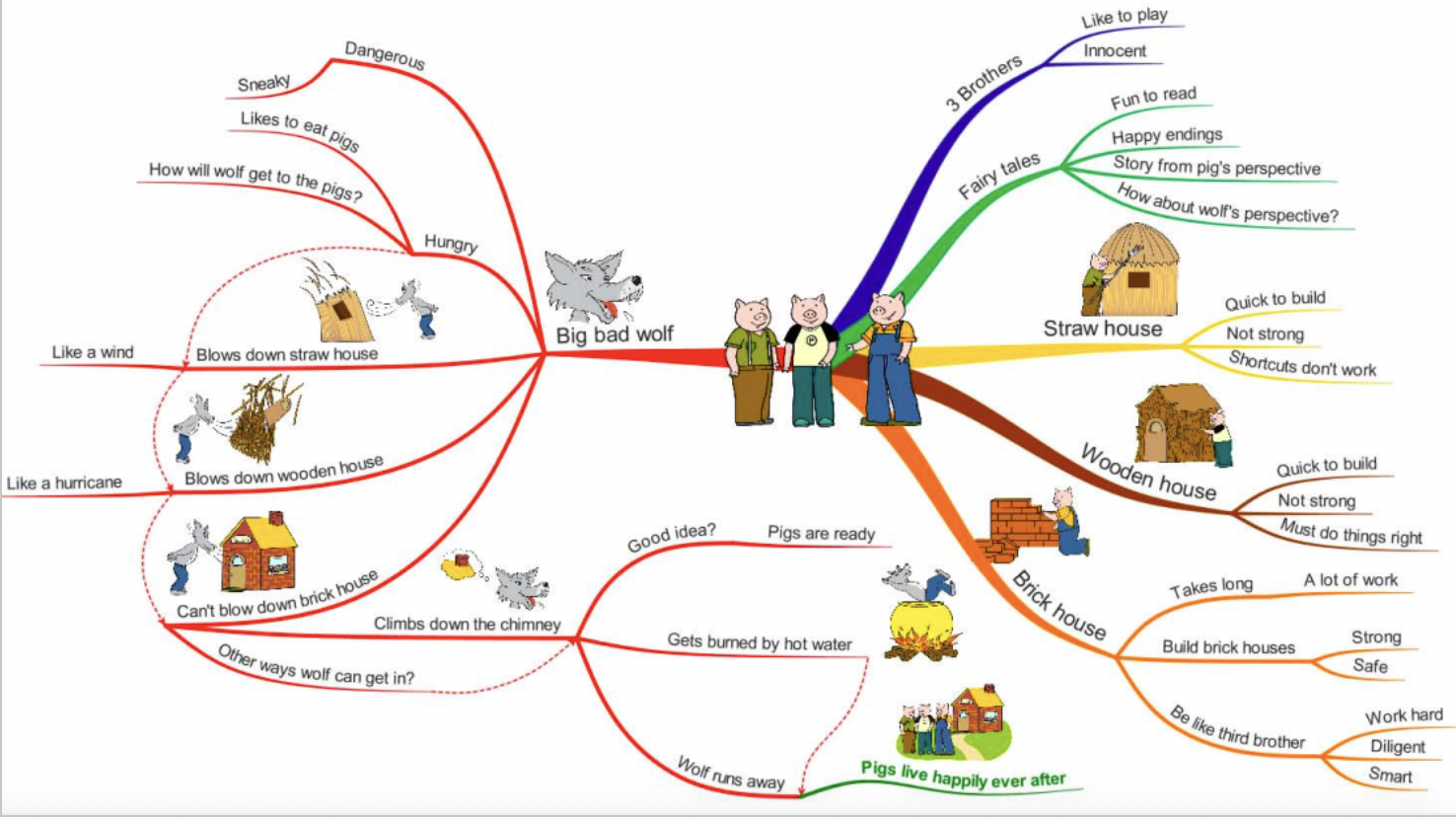
-
Kia ora Year 7's
This week we will focus on completing our story mapping.
If we chose the Gorilla last week- this week we will be working on the Piggybook and vice cersa.
Using visuals to summarise what we learned from the reading.
Learning Intentions:
- Students will be able to create a mind map to summarise the main ideas and themes of a sophisticated picture book.
- Students will be able to use visuals to represent their understanding of the text.
- Students will be able to explain their mind map to others.
Success Criteria:
- Students can identify the main ideas and themes of the sophisticated picture book.
- Students can create a mind map that visually represents their understanding of the text.
- Students can explain their mind map to others.
Remember you have a choice between the two sophisticated picture books we read in class. These are linked below.
Here is a model for you to follow:

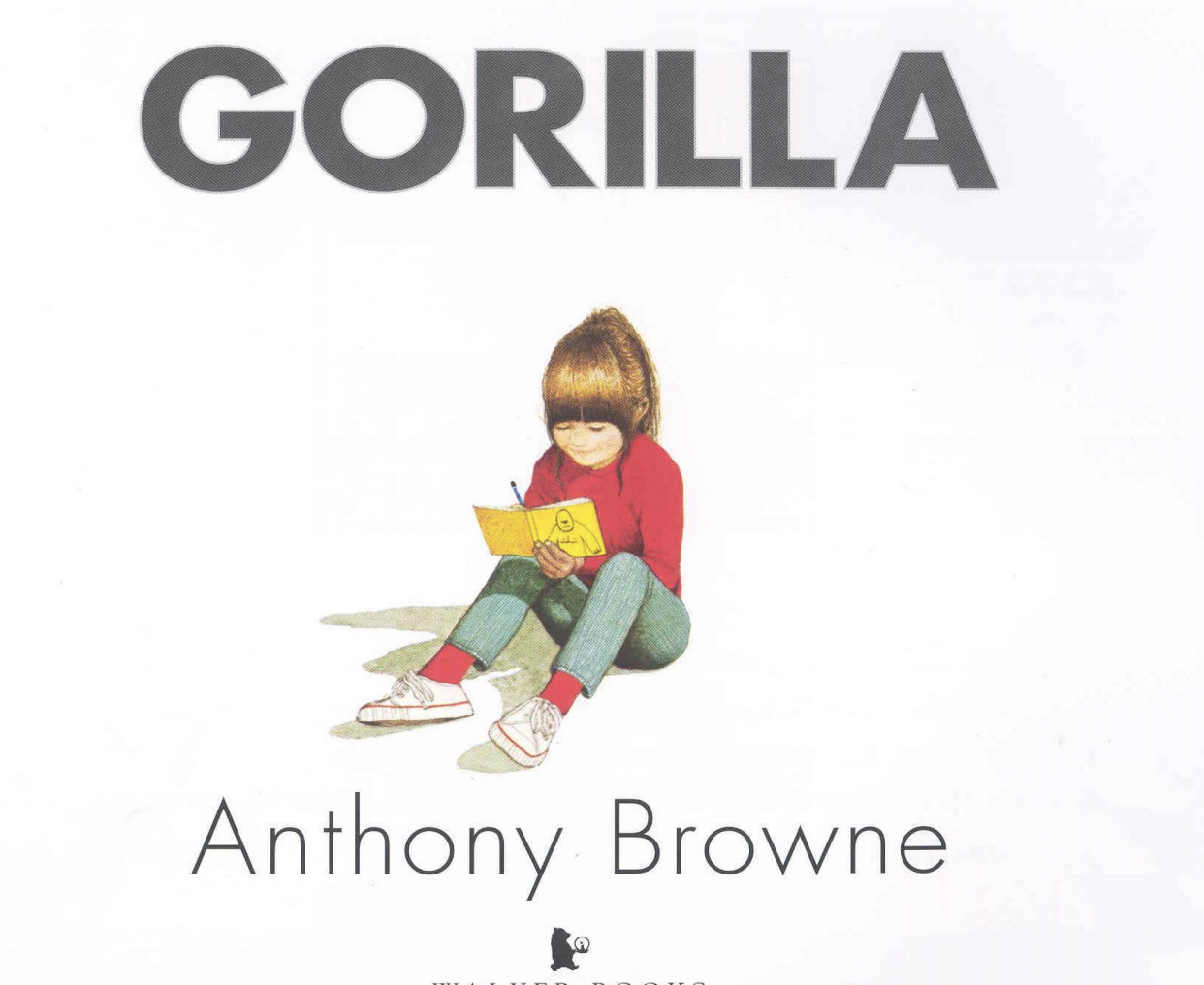
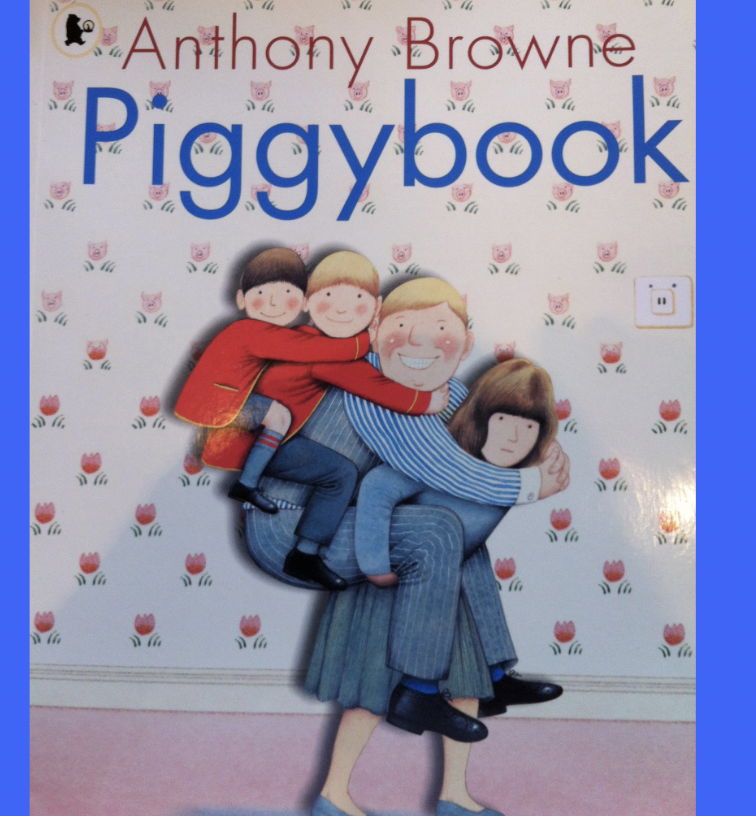
-
Kia ora Year 7's
We will be diving into the world of The Lion King this week.
Exploring Characters in "The Lion King"
Learning Intentions:
- Understand the key characteristics and motivations of characters in "The Lion King."
- Analyse how characters contribute to the development of the storyline.
Success Criteria:
- Students can identify and describe the main characters in "The Lion King," including their traits and motivations.
- Students can analyse specific scenes to explain how characters' actions impact the plot.
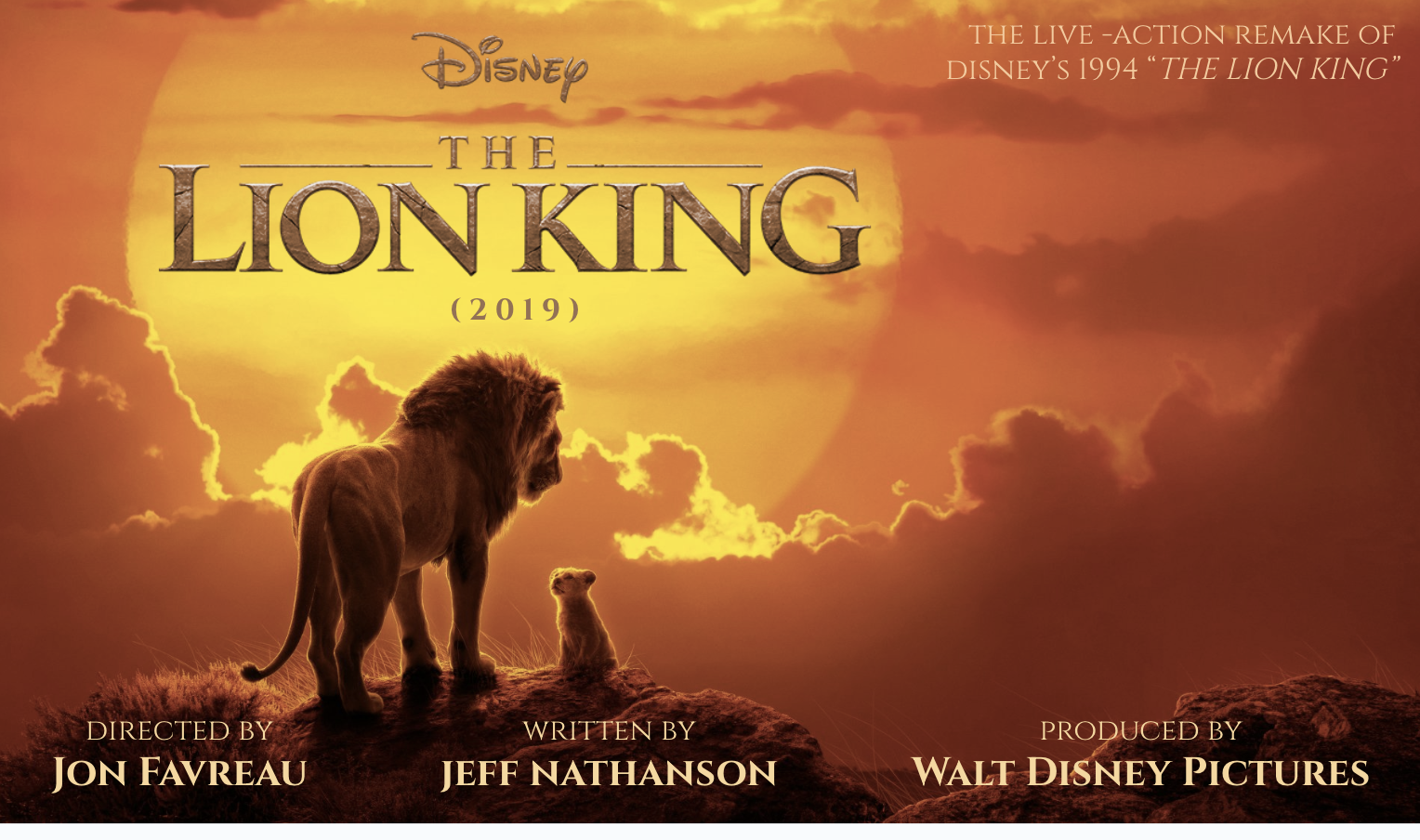
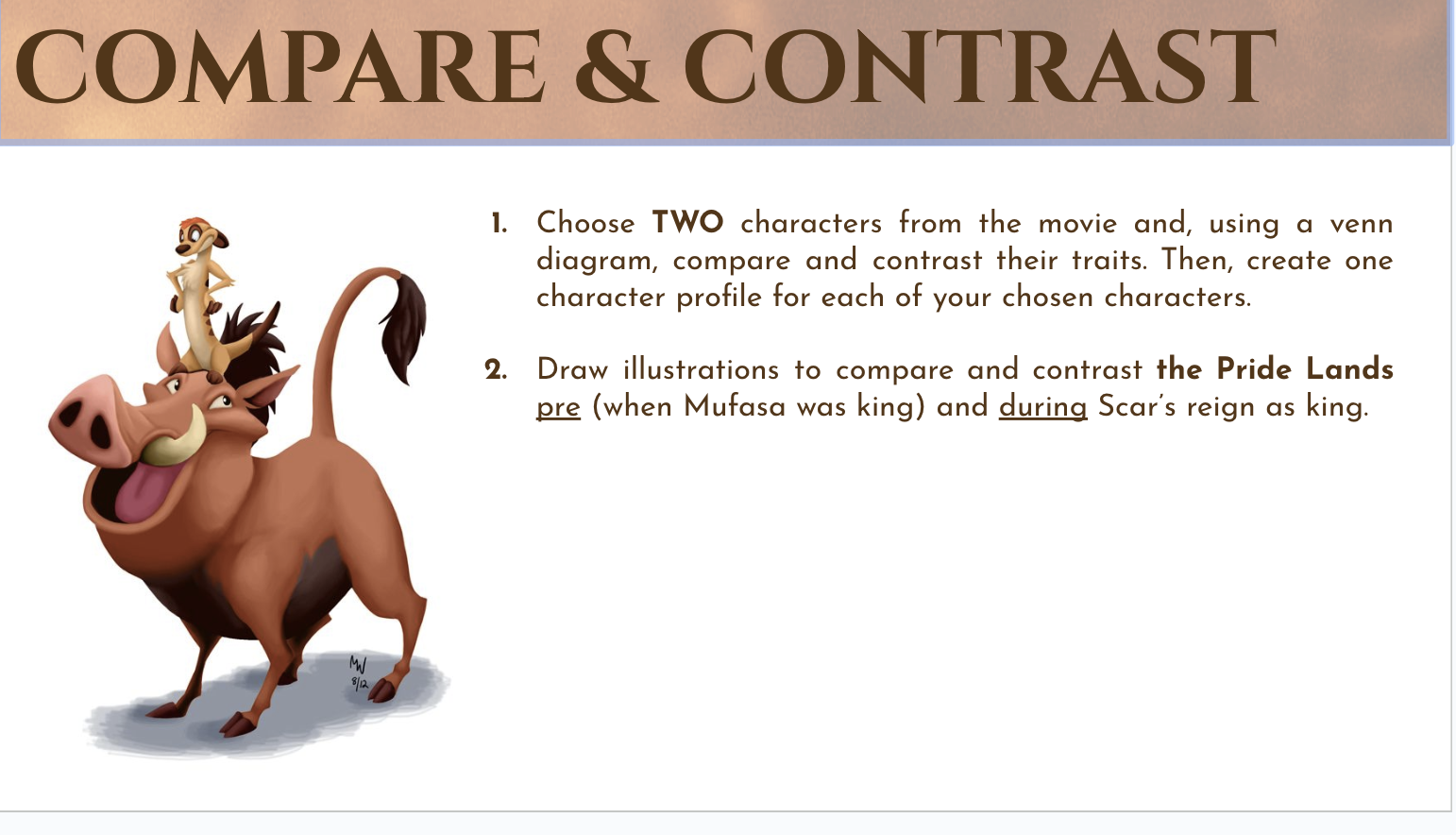
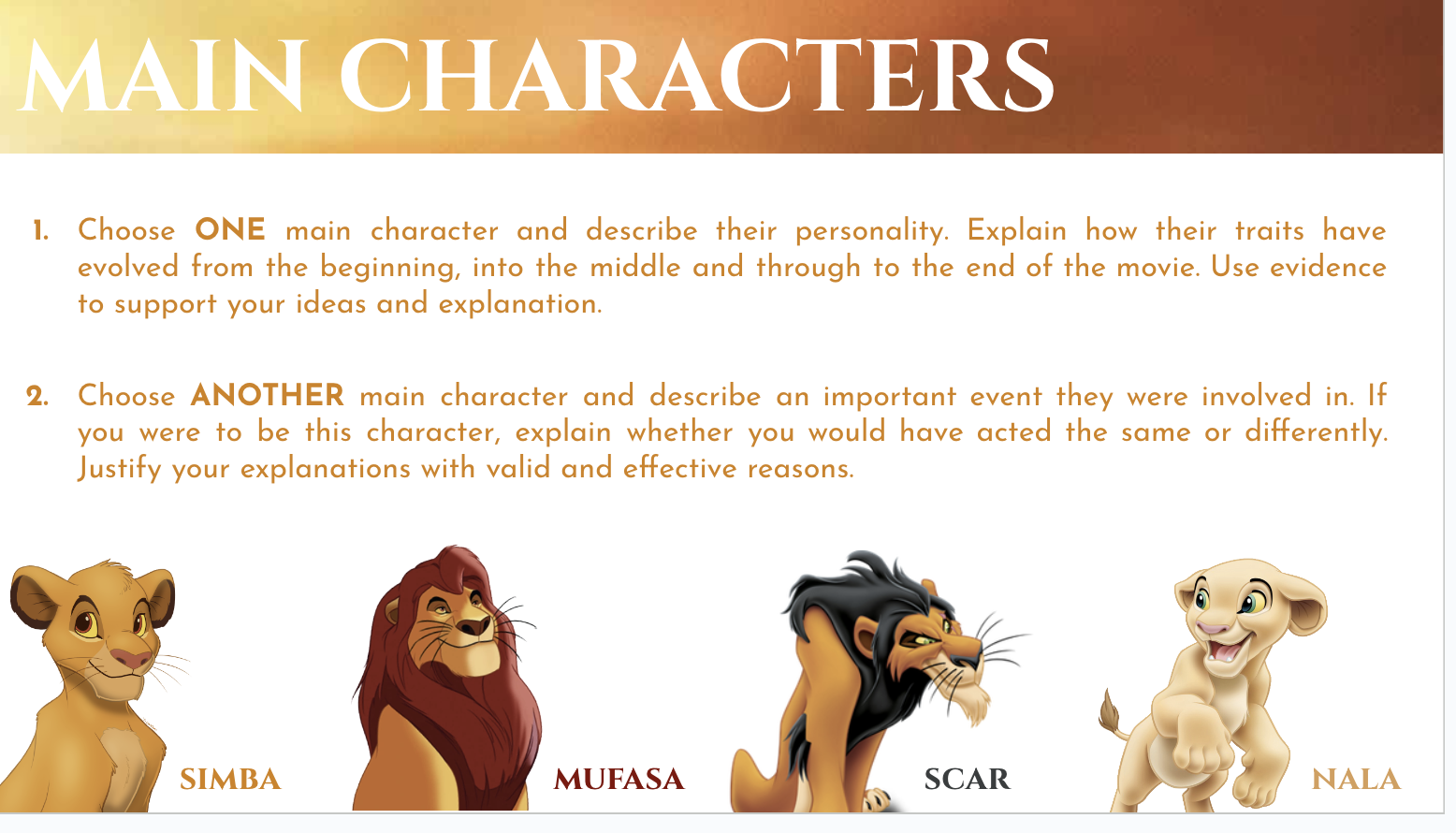
-
Kia ora Year 7's
We will be diving into the world of The Lion King this week.
Exploring Characters in "The Lion King"
Learning Intentions:
- Understand the key characteristics and motivations of characters in "The Lion King."
- Analyse how characters contribute to the development of the storyline.
Success Criteria:
- Students can identify and describe the main characters in "The Lion King," including their traits and motivations.
- Students can analyse specific scenes to explain how characters' actions impact the plot.




